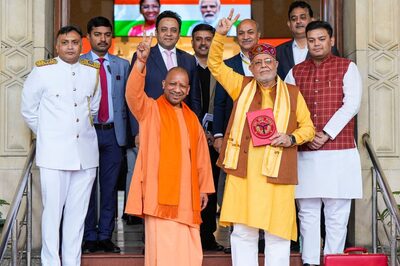
views
China’s economy is growing in the low single digits, Japan’s currency is depreciated by more than 17% this year, Britain has a staggering 11% inflation, and the economy of the USA, the less the said, the better. Amidst all these global economic clues and some cluelessness, if you filter out the major economies, with the first filter being the growth in higher single digits, the second being the inflation in single digits, the third being the least currency depreciation, then the only option remains India.
In November, it got reflexed in several economic events: One, the Sensex, an index of the Indian stock market, hit fresh highs, making this year the consecutively the seventh to touch new highs. Two, the state secretary of Treasure, Janet Yellen, mentioned the ‘friendshoring’ and India in the same statement, proving the elephant as a viable alternative to the dragon in the ‘China Plus One’ strategy. Three, an intermediate Free Trade Agreement between India and Australia.
To the uninitiated, friendshoring is a strategy to relocate the supply chains to countries with low chances of disruption. The USA, irritated by the supply chain disruption caused by Covid-19 and the Russia-Ukraine war after that, doesn’t want to put all eggs in one basket. And India is naturally another basket in that case.
Among all the factors that made this possible, one is vital and oft-neglected: Economic Diplomacy. India’s diplomats have told the world how the land of seven rivers is politically stable and full of opportunities. Whether pitching New India in Dubai Expo 2020 or Indian embassies’ programmes for Make In India, New Delhi has pushed the limits to attract foreign investment; in some ways, it has become victorious too. A couple of decades ago, India was purely identified as a consumer market, which has changed to some extent, with India being identified with high-quality IT and pharma professionals and the nation with a demographic dividend.
The impression of India and India Inc. is not just to attract investment but also to help the poorer countries. Back in 1964, India, then an economically poor country, established the Indian Technical and Economic Cooperation to assist and cooperate with the poorer nations. The Success of India Inc. in Africa is another example. Even when Sri Lanka was in political and economic turmoil, India extended the Line of Credit to let the island nation buy Urea and Petroleum.
Considering the above two points, India’s economic diplomacy should be laid out widely, with far-reaching efforts. India’s goal is not only to bring investment back home but also to invest in an unexplored territory as a business and strategic interest. India is on track, and wants to speed up the process.
First, the more agreements and more access to markets. The companies coming to India should have a broader market access, not just India. The ongoing discussions regarding the trade agreements should continue, but with more vigour. That also requires more inter-ministerial coordination and meetings, hiring more people and extra contractual and lateral entries in embassies and ministries. To engage with francophone and lusophone countries, we need people who excel in those languages.
Second, the technology and the people. India’s IT and pharma success stories are well-known worldwide. The age is of semiconductors, data science and machine learning, and electric vehicles. India’s population is young and can be proven as a demographic dividend. Having more technically trained people at home will obviously turn out to be a hotspot for the investment. India’s youth already has aspirations; it needs good technical education and more technology-oriented courses.
Third, bureaucracy and polity. Competitive and cooperative federalism can come to the saviour here. More and more regional leaders are engaging with the companies, and inviting them to the states would be fruitful. Also, bureaucratic red tape can be removed by incentivising promotions based on the investment record in the area. Both of these steps have been implemented by Beijing, and have yielded promising results on the eastern coast of China.
‘Will India be an alternative to China?’ is not the question now. The questions are: How much can we leverage our gain from China’s loss? In how many sectors can India be proven as an alternative? Apart from IT services, which industry can have a hub in India? Which role will the startup ecosystem play?
Harshil Mehta is an analyst who writes on international relations, diplomacy, and national issues. The views expressed in this article are those of the author and do not represent the stand of this publication.
Read all the Latest Opinions here


















Comments
0 comment